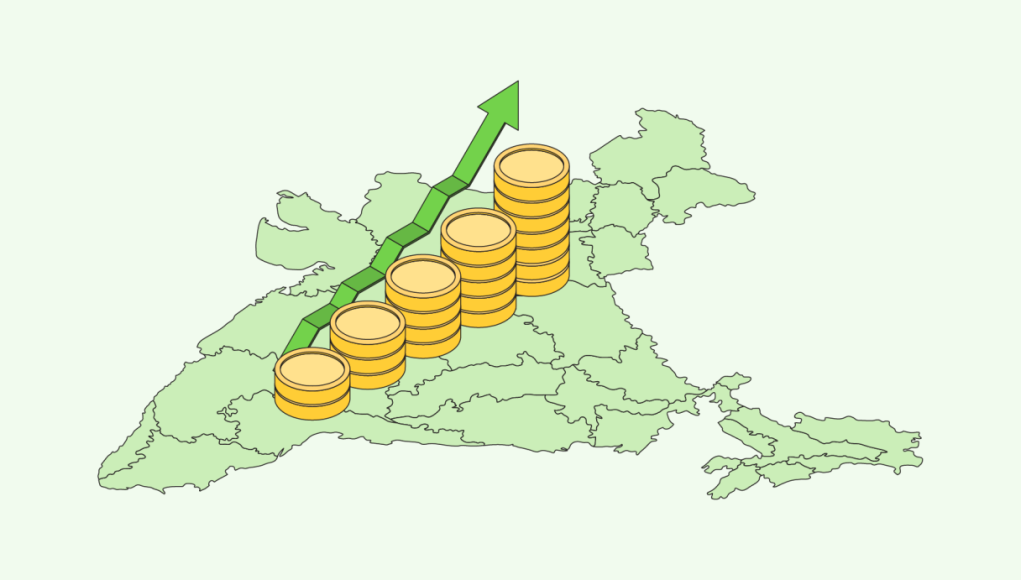India, with its rapidly growing economy, has established itself as one of the largest economies in the world. Over the past few decades, several key sectors have played a crucial role in driving the country’s economic growth. These sectors not only contribute to the GDP but also create millions of jobs, enhance infrastructure, and provide innovation. This blog explores the major sectors that are fueling India’s economic progress and the future opportunities they present.
1. Introduction: India’s Economic Growth Story
India’s economic growth has been impressive, with the country emerging as a significant player on the global stage. According to recent data, India is expected to become the world’s third-largest economy by 2030. The growth is driven by several key sectors, each contributing uniquely to the economy. These sectors not only offer opportunities for businesses but also attract foreign investments, boost exports, and help in job creation.
2. Key Sectors Contributing to India’s Economic Growth
a) Information Technology (IT) and Software Services
India’s IT and software services sector has been a cornerstone of the country’s economic growth, contributing significantly to its GDP and exports. The sector has gained global recognition for providing high-quality software development, IT consulting, and business process outsourcing (BPO) services.
- Global IT Hub: India is home to some of the world’s biggest IT companies, including TCS, Infosys, and Wipro, which provide services to global clients.
- Export Earnings: The IT sector is one of India’s largest export earners, with software services accounting for a significant share of the country’s foreign exchange reserves.
- Employment Generation: The IT industry has created millions of jobs, with a steady demand for software developers, data scientists, and IT consultants.
As technology continues to evolve, India’s IT sector is expected to grow further, driven by advancements in artificial intelligence (AI), machine learning, and blockchain technology.
b) Manufacturing and ‘Make in India’ Initiative
The manufacturing sector in India has long been a significant contributor to its economic growth, and the government’s ‘Make in India’ initiative has further boosted this sector. The initiative aims to transform India into a global manufacturing hub, attract foreign investments, and create jobs.
- Growth in Key Industries: The automotive, textile, and electronics manufacturing sectors have seen significant growth in recent years, attracting both domestic and international investments.
- FDI Inflows: The Indian manufacturing sector has been one of the major beneficiaries of foreign direct investment (FDI), which has led to enhanced production capacities and technological advancements.
- Employment Opportunities: Manufacturing creates vast job opportunities, particularly in rural areas, reducing unemployment and driving rural economic growth.
The future of India’s manufacturing sector looks promising, with the government focusing on infrastructure development, ease of doing business, and skill development to support this growth.
c) Agriculture and Agro-Based Industries
Despite rapid industrialization, agriculture continues to play a vital role in India’s economy. It employs a significant portion of the population and provides raw materials for agro-based industries. Agriculture contributes around 17% to India’s GDP and is crucial for food security.
- Green Revolution Impact: The Green Revolution in the 1960s brought high-yielding varieties of crops, irrigation, and fertilizers to Indian farms, significantly boosting agricultural productivity.
- Agro-Based Industries: The food processing industry has gained momentum, with India becoming one of the largest producers of dairy, fruits, vegetables, and spices in the world.
- Export Growth: India is a major exporter of agricultural products like rice, wheat, tea, and spices, contributing to its foreign exchange earnings.
With a focus on modernization, digitalization, and sustainable farming practices, the agriculture sector is poised for even higher growth in the coming years.
d) Renewable Energy
As the world transitions to cleaner energy sources, India is making significant strides in renewable energy. The government’s ambitious plans to increase the share of renewable energy in the country’s energy mix have resulted in rapid growth in the sector.
- Solar and Wind Energy: India is one of the largest producers of solar and wind energy globally, with massive investments in solar parks and wind farms.
- Government Initiatives: The government has set an ambitious target of achieving 500 GW of non-fossil fuel-based energy capacity by 2030, which will play a significant role in reducing the country’s carbon footprint.
- Job Creation: The renewable energy sector has created thousands of jobs in installation, maintenance, and R&D, making it a key player in India’s green economic transformation.
India’s renewable energy sector continues to grow with the adoption of new technologies, making it an essential part of the country’s sustainable development goals.
e) Healthcare and Pharmaceuticals
The healthcare and pharmaceutical industries have seen tremendous growth, particularly with the COVID-19 pandemic highlighting the need for robust healthcare infrastructure and pharmaceutical innovation.
- Healthcare Services: India has made significant progress in expanding healthcare services, with the government focusing on affordable healthcare for all through programs like Ayushman Bharat.
- Pharmaceutical Exports: India is known as the “pharmacy of the world” due to its large-scale production and export of generic medicines and vaccines. The country is the largest supplier of vaccines globally and plays a crucial role in the global supply chain.
- Digital Health Innovations: The growing adoption of telemedicine, digital health records, and healthcare apps is expected to further transform India’s healthcare system.
The healthcare and pharmaceutical sectors are expected to continue growing, driven by increasing healthcare demand, innovations in medical technology, and a growing population.
f) Financial Services and Banking
India’s financial services sector has become increasingly sophisticated, with a focus on expanding digital financial services, financial inclusion, and supporting economic growth.
- Banking and Digital Finance: India’s digital payment ecosystem has boomed with the rise of mobile banking, UPI payments, and fintech innovations.
- Stock Markets and Investments: The stock market has witnessed significant growth, attracting domestic and foreign investors, with India becoming an attractive destination for portfolio investments.
- Financial Inclusion: Initiatives like Jan Dhan Yojana and Mudra Yojana have helped bring millions of people into the formal financial system, ensuring equitable growth.
The continued development of India’s financial services sector, combined with technological advancements, promises to fuel further economic growth.
3. The Role of Government Policies in Boosting Growth
The Indian government has implemented several key policies to support the growth of these sectors, including:
- Ease of Doing Business Initiatives: Reforms aimed at reducing red tape, improving regulatory frameworks, and enhancing infrastructure have made it easier for businesses to operate in India.
- Foreign Direct Investment (FDI) Policies: The government has liberalized FDI norms in several sectors, encouraging global investments.
- Incentives for Startups: The government’s focus on startups through schemes like Startup India and Digital India has nurtured innovation and entrepreneurship.
4. Challenges and the Path Forward
While India’s key sectors continue to drive economic growth, there are several challenges, such as income disparity, infrastructure deficits, and environmental concerns. Addressing these issues will require continued reforms, investments in human capital, and a strong focus on sustainable development.
5. Conclusion
India’s economic growth is largely driven by the vibrant and dynamic sectors of IT, manufacturing, agriculture, renewable energy, healthcare, and financial services. With continued government support, technological innovation, and infrastructure development, these sectors will continue to play a crucial role in India’s economic rise. As India embraces new technologies, global investments, and policy reforms, the future looks promising for the country’s economic trajectory.
Stay informed about these key sectors and their contributions to India’s economy as the nation moves towards greater prosperity.



































